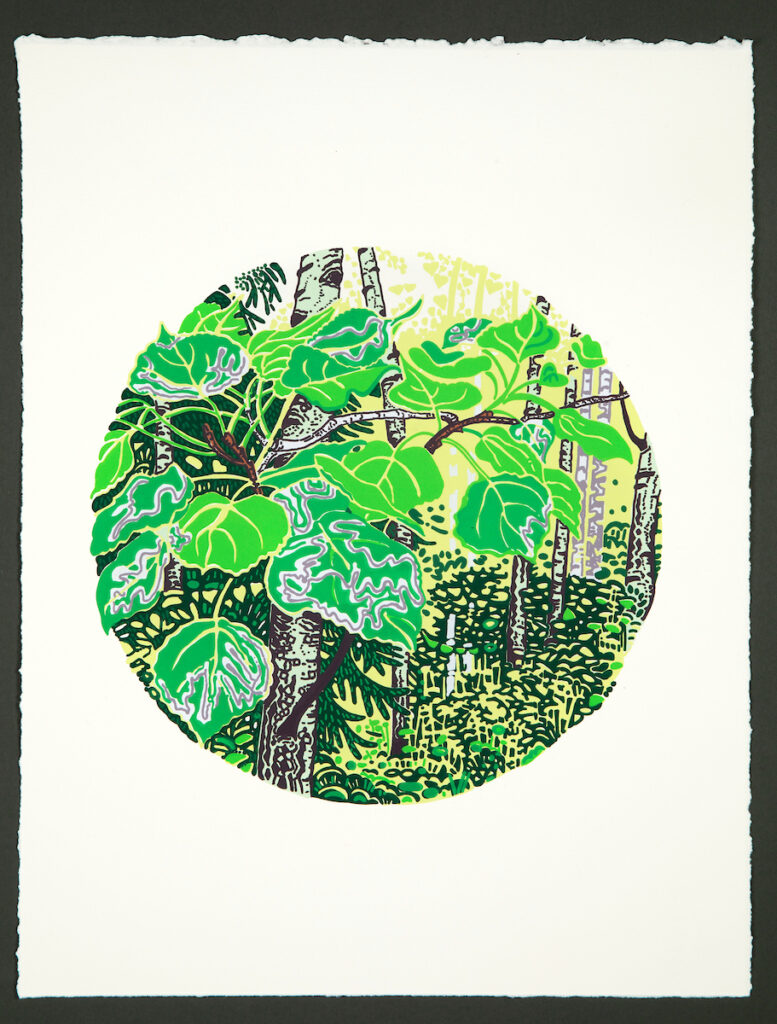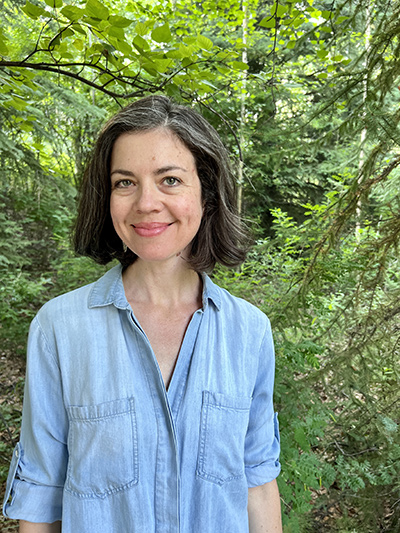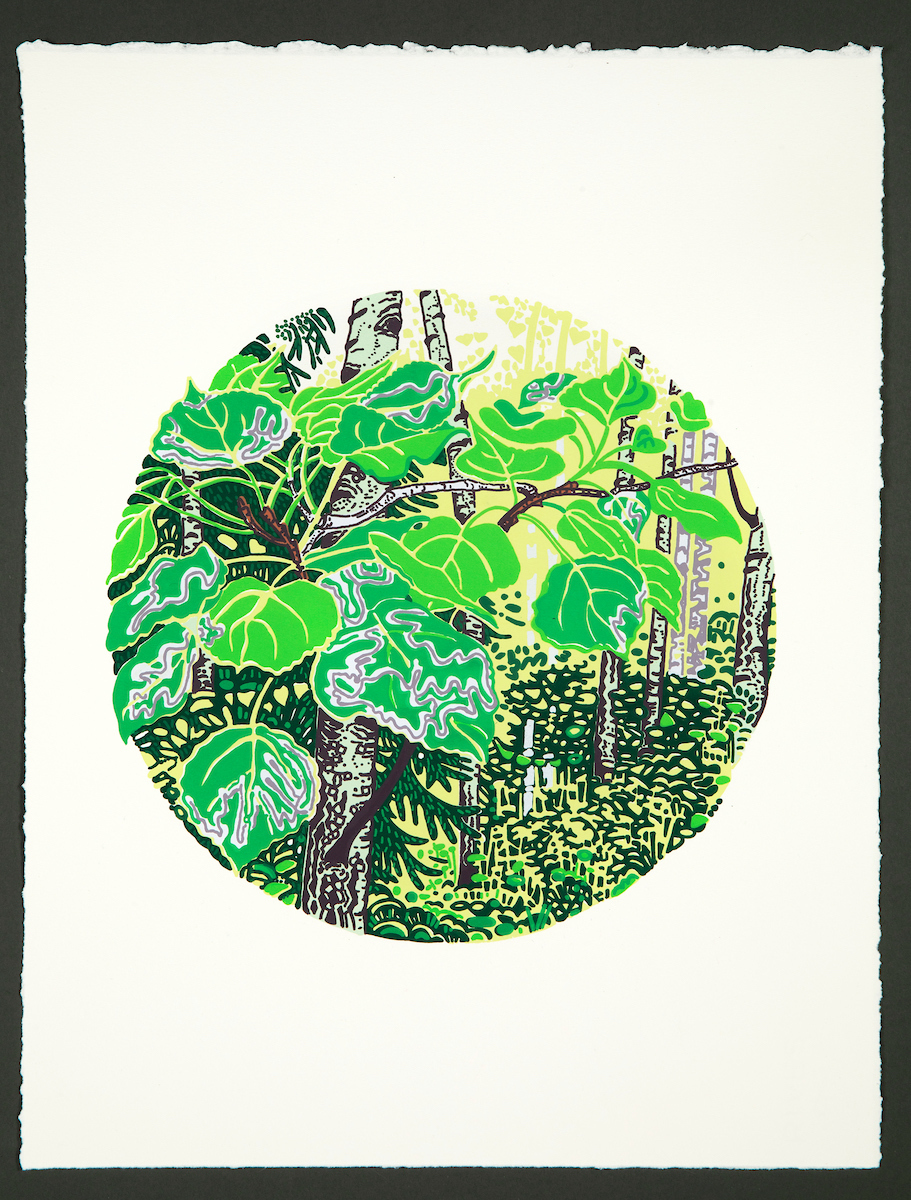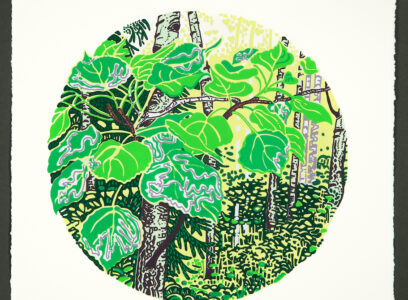Gail Priday

Comorbidities
The tracks on aspen leaves made by leaf miner larvae are familiar to anyone who has spent time in Interior Alaska during the summer months. Aspen leaf miners are tiny insects that have dramatically impacted the look and health of our trees. The larvae eat their way through leaf cells, creating winding silver paths across the surface of the leaves. I am attracted to the dichotomy of the beautiful yet harmful patterns resulting from this infestation. While walking and talking about aspen running canker with microbiologist Dr. Mary Beth Leigh and forest ecologist Dr. Roger Reuss, I learned that this disease is most likely caused by a native fungal pathogen, Neodothiora populina. Drought and leaf miner defoliation damage act as comorbidities. They weaken the trees, making infection by aspen running canker disease more likely. This combination has led to notable mortality in Alaska’s boreal forest, especially north of the Alaska Range.
We have repeatedly heard the term comorbidities in recent years, and I find the word complicated. On the one hand, it makes sense that a tree with leaves infected with leaf miners would be weakened and, therefore, more susceptible to secondary infections. Calculating comorbidities in living things is helpful for assessing risk. Yet calculations and predictions about human lives are less straightforward. It can be necessary to consider yet can also be dehumanizing. I wanted to capture that complexity in this piece. It is a bright, inviting image of a beautiful summer day in Interior Alaska, yet the quaking infected leaves are a focal point. The intricate patterns created by the leaf miners add to the aesthetic quality of the leaves, yet they may also be harming the tree. These leaves point to the complexity of all situations, stories, and lives.
The opportunity to go to the field and learn about a topic firsthand from the scientists conducting the research, and to be able to ask endless questions, was key to this collaboration. The scientists I worked with are passionate about their work and generous with their time. I am thankful for their dedication to the boreal forest and for taking the time to share their research with me.
Gail Priday
Gail Priday is a visual artist living in Fairbanks, Alaska. She holds an MFA in painting and printmaking from the University of Alaska Fairbanks, an MEd in art education from Towson University, and a BA in art from James Madison University. Priday finds inspiration from the natural world, specifically the boreal forest. Her work has been featured in exhibits, public spaces, and private collections throughout Alaska and beyond. She values interdisciplinary collaborations and has been involved in ITOC since 2016. She enjoys working in the studio, long walks in the woods, and spending time with her family.
Website: gailpriday.com


